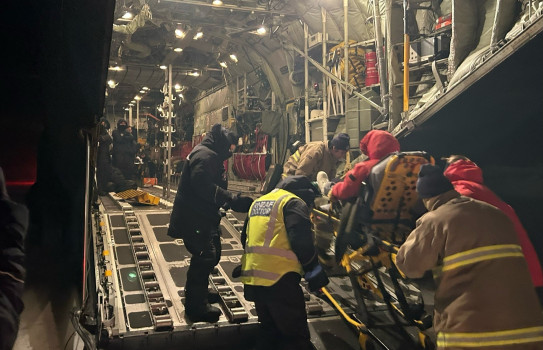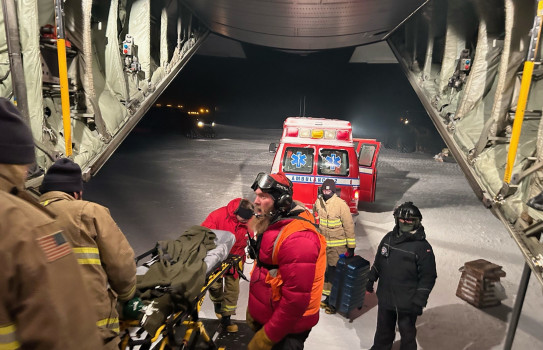RNZAF carries out rare Antarctica mid-winter medical evacuation flight
A Royal New Zealand Air Force (RNZAF) C-130H Hercules crew has today carried out a rare medical evacuation of a patient from Antarctica, taking advantage of a narrowing gap in the weather to fly the challenging night-time mission.
27 June, 2024
The patient, an American from McMurdo Station, is in a stable condition with a non-life threatening condition. However, they require medical treatment that cannot be carried out in Antarctica.
Air Component Commander Air Commodore Andy Scott says flights to Antarctica at this time of year are very challenging due to the extreme Antarctic environment, changeable weather conditions and because there is no daylight. Apart from flying in a combat environment, night flying missions to Antarctica in the middle of winter present the most challenging and dangerous of conditions.
The Hercules crew flew into Phoenix Airfield using night vision goggles. The first time this technology was used by the RNZAF to fly into Antarctica was in July 2021 for another medical evacuation. One of the pilots on today’s mission also flew on that mission.
The Hercules flew from RNZAF Base Auckland to Christchurch on Tuesday in preparation for today’s flight.
It left Christchurch at 2am and touched down at Phoenix Airfield at 8.50am, and left shortly after 10am for the seven- to eight-hour return flight to Christchurch.
The aircraft was “hot fuelled” on the ice, where the engines are kept running to protect them in the extreme cold. The temperature in Antarctica was minus 33degC with a wind chill bringing temperatures down to minus 40degC.
“With a narrow gap of acceptable weather, the crew deployed early this morning,” Air Commodore Scott said.
“The weather had deteriorated again on arrival and so they have threaded the needle to get in when they did.”

A patient from the United States’ McMurdo Station in Antarctica has been flown to Christchurch by an RNZAF Hercules crew. Images: McMurdo Station staff

Air Commodore Scott said at each stage of the journey the crew had to make “go, no go” decisions on whether to proceed.
Our highly trained crew analyse the conditions every step of the way to ensure they can continue. Last night the weather conditions looked suitable, which enabled them to proceed in the early hours of this morning.
Work by McMurdo Station staff to prepare the ice runway at Phoenix Airfield, by clearing snow and compacting it, had been completed on Wednesday.
With no airfields to divert to en route, the aircraft needed to be refuelled in Antarctica before making the journey home.
“The pilots have a point of no safe return when they make the decision to continue or turn around, known as a `boomerang’,” Air Commodore Scott said.
"We’re very pleased we have been able to successfully carry out this Antarctica flight today and get the patient to New Zealand to receive further medical treatment."
No. 40 Squadron land in Christchurch with the patient